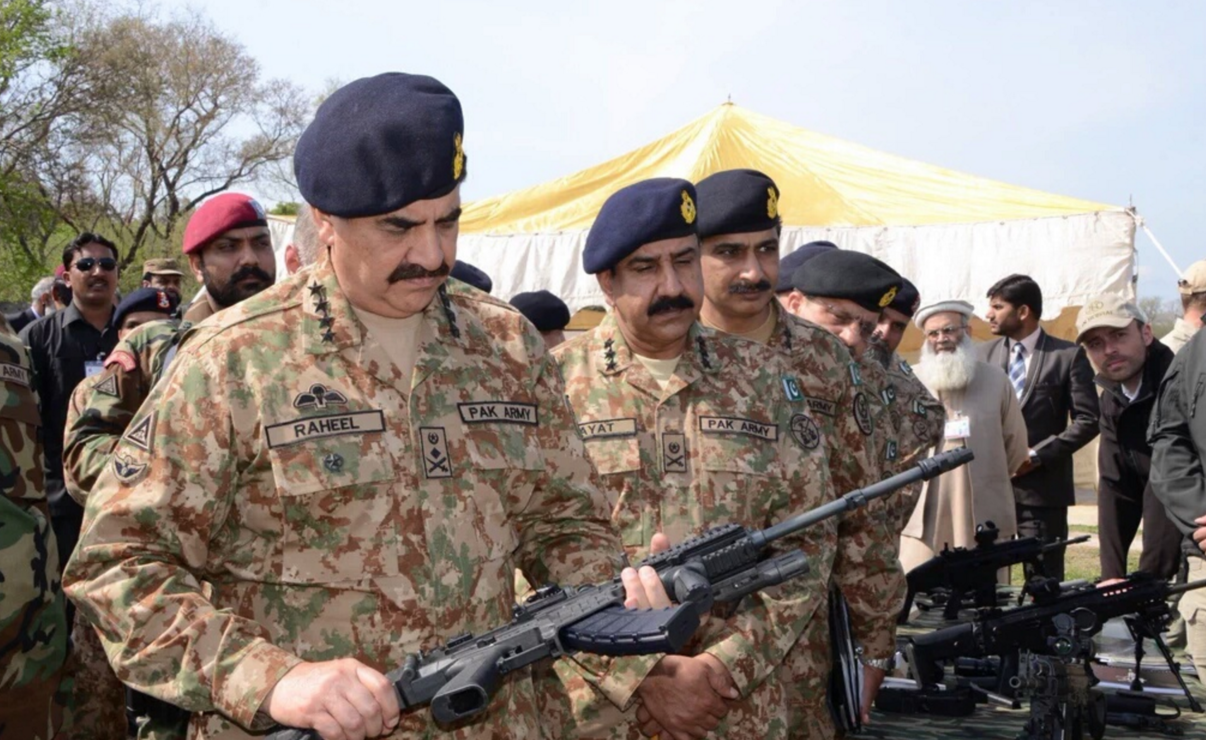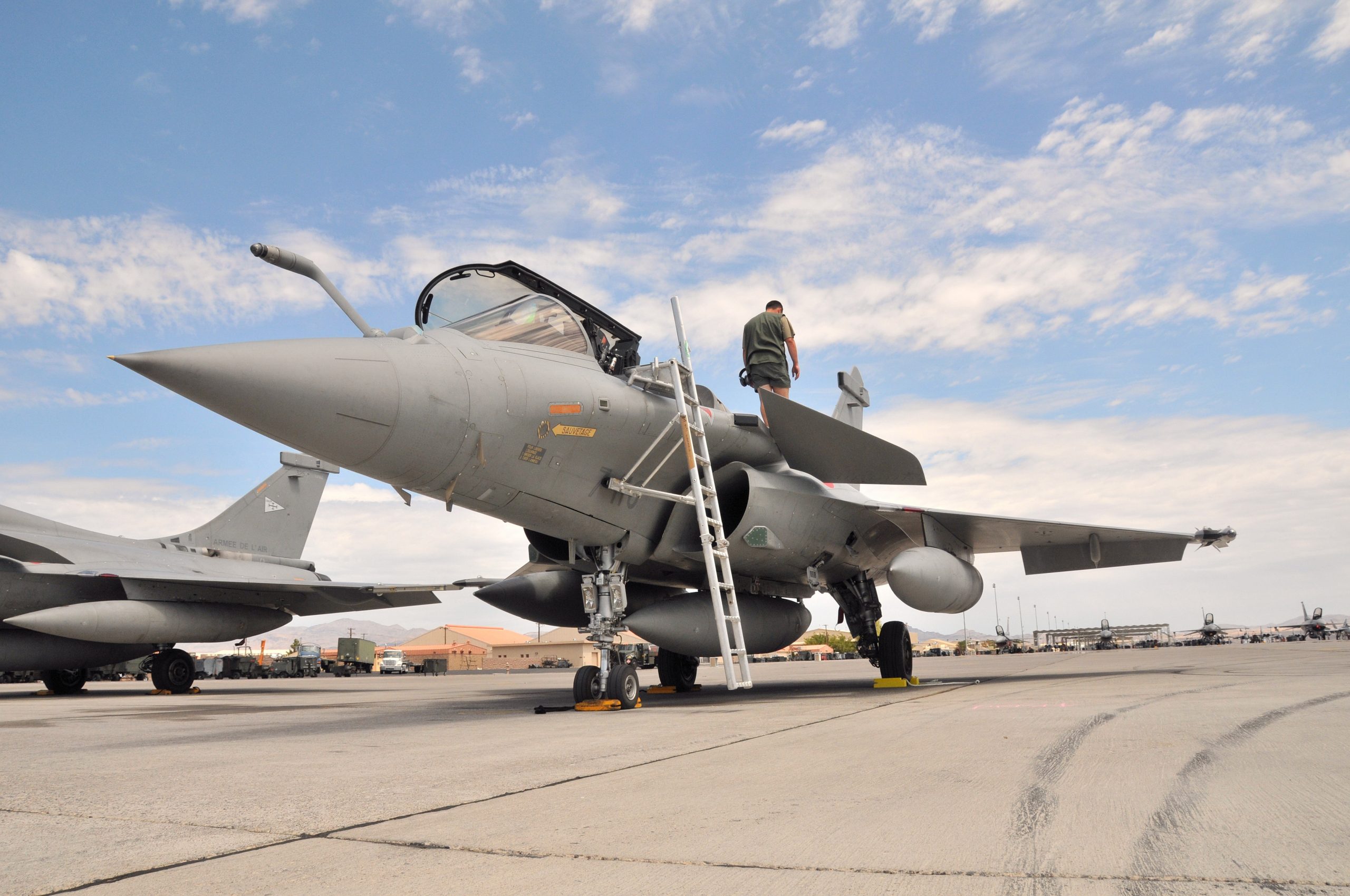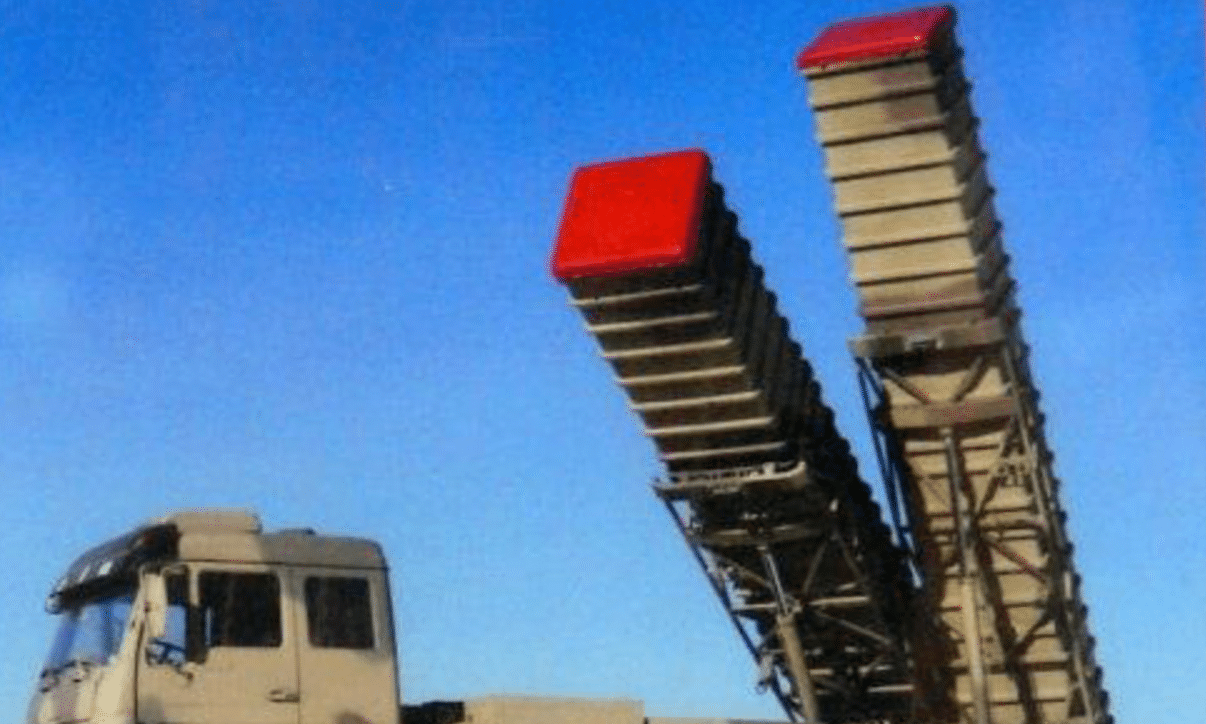2475Views 7Comments

Saudi Arabia is Pakistan’s largest arms importer; POF reveals new rifle program
Lt. General Omar Mahmood Hayat, the chairman of Pakistan Ordnance Factories (POF), informed the National Assembly Defence Production Committee that Saudi Arabia stood as POF’s largest buyer of small-arms and ammunition.
Lt. Gen Hayat expressed disappointment that ‘domestic security institutions’ have been engaging with third-party vendors instead of POF for their needs; the exception to this was the Khyber-Pakhtunkhwa (KPK) Police.
He also told the Committee that “POF is now focusing on exports” and that a new assault rifle to replace the Heckler and Koch G3 is also in the works.
Comment and Analysis
In a sense, POF is Pakistan’s ‘best’ defence industry player. Small arms and ammunition are a recurring need on the market, not just in developing world countries or specific markets (such as the Middle East and Africa), but globally. Even in markets where the Pakistani defence industry would not really have room for maneuvering, such as Pacific Asia, POF has a shot at capturing market-share among law-enforcement agencies and other civil defence markets. How? Cost. Pakistan’s cheaper currency and POF’s ability to come up with high-quality essentials, such as ammunition and munitions, makes it a very competitive vendor; a possible buyer with heavy quantitative demand could look to POF.
But there are problems. For a number of reasons, POF is not getting the domestic support it needs in order to truly thrive. For example, Hayat noted that Pakistan’s domestic agencies – likely referring to local law-enforcement agencies (LEA) – are approaching third-party vendors instead of POF. This is concerning. For one thing, POF’s growth and development rests on receiving orders, and all things considered, the local market should be the driving force of such sales. Pakistan has extensive internal security needs: Its LEAs require a wide range of essential equipment – assault rifles, body armour, communications equipment, suitable vehicles, etc. Moreover, these are not small entities in the comparative sense, when given the optimal budgetary support, they can generate considerable demand (and thus work for POF).
POF not being able to meet those needs suggests that there is a disconnect between what the LEAs are looking for, and what POF is able to presently offer. To be fair, the LEAs are not entirely incorrect in their assessment. Despite making real in-roads in the international market, it is no secret that POF’s facilities require a number of necessary upgrades, so as to enable them to produce more contemporary gear, with newer small-arms designs in particular. Furthermore, it should be noted that POF does not make ancillary equipment to support small-arms, such as red-dot sights (among other items).
That said, although support from the LEAs is lacking, POF has made decent in-roads with the armed forces. The Army seems to have adopted the body armour design presented by POF during IDEAS 2014, and POF is the principal supplier of core munitions (e.g. artillery rounds and tank shells). That said, the Army has evolving needs as well, and it is imperative that POF be kept up to par with the industry in order for it to not only support the Army, but for the Army to most efficiently support itself.
To rectify these issues, it is incumbent upon the Government of Pakistan to actually expand its funding of POF – upgrade its facilities so that it can readily manufacture newer generation rifles, imbue it with the capacity to produce relevant products (e.g. sights), and flexibility to readily meet the personnel equipment needs of the armed forces and LEAs. In terms of the later, we are referring to the ability to develop equipment for specialized needs (the POF Eye is a good example). Not only will POF be able to meet the needs of the armed forces and LEAs, but it would become much more attractive on the global market as well. POF has an opportunity to be a leader in the industry; the ability to bind competitive costs with contemporary product offerings would be a huge strength. But POF needs resources in order to engage in order to open up a sufficient number of overseas avenues for itself.
Lt. Gen. Hayat also spoke of a new rifle program to replace the G-3. Dawn did not offer an exact quote, so it is unclear if the chairman was referring to the ongoing rifle evaluation program, or if POF is intending to develop its own design. It is very likely that it was in reference to the ongoing trials. A rifle design capable of being chambered for different rounds – i.e. 7.62x51mm, 7.62x39mm and 5.56x45mm – would be ideal. The single core design could be tailored to meet distinct needs – e.g. low-caliber rounds and/or personnel defence weapon (PDW)-like application for LEAs, and 7.62x51mm for the Eastern Front. Granted, there are risks with new designs (such as the SCAR, ARX and BREN), especially in terms of their lack of long-term battle exposure, but the Army will have to make that assessment after putting each option through exhaustive tests in all likely battle scenarios.
As discussed above, ancillary areas -such as optics – do not seem to be in POF’s purview. This ought to be re-considered. Not only could POF’s marketability increase with a combined arms and sights offering, but the Pakistani armed forces and LEAs could utilize POF’s sights. There is a genuine domestic need. It will also be interesting to see if POF updates its body armour offerings as well. For example, the Scalable Plate Carrier (SPC) design has become quite ubiquitous in recent years, even within the Pakistani armed forces; seeing POF update its body armour line in this regard would be a natural (and welcome step – at least for the domestic entities in need of such goods).



7 Comments
by Bilal Khan - Quwa
New moderation rules are now in effect. *All* off-topic posts, insults, etc, will *not* be approved. Ensure that your comments are (1) constructive, (2) professional, and (3) on-topic. Threads will automatically be closed after 48 hours of posting.
by sufi
i recently visited POF and was utterly disappointed , it seemed like pre-ww2 industrial setup…….more importantly the workforce was way below the required standards in their skills, demeanour and work ethics……we need to change labors laws , it must be made easy to hire and fire people.
by kashif sheikh
now you did a good job
by middleway1
I don’t agree with your proposed solution for “the Government of Pakistan to actually expand its funding of POF”. Government funding can never solve the problem of the underlying faulty business policies of the Government that create obstacles in the path of private industry.
If, for example, the POF were a private enterprise, they would have made sure to make the necessary upgrades to remain competitive in the market. Being funded by the Government gives them no incentive.
What the Government really needs to do is to change policies to decrease the red tape involved in getting anything done. Every step in the red tape process is designed to line the pockets of the Government officials, who can block any project from moving forward unless they get their “commission”. This occurs at all levels of Government, from the smallest to the largest. Pakistan cannot progress unless “we the people” realize that as things stand, Government is part of the problem, not the solution.
The role of Government, whether federal, provincial, district, or municipality level, needs to be restricted to only those things that are of public interest, i.e. water, power, roads, education, etc.. The only exception to this model is China. But the secret of the Chinese system is that it has been brutal in eliminating corruption from the bottom up. Yes, there is corruption, but nothing compared to what we have in Pakistan. They do have a concept of “public interest”, which we lack in Pakistan, where “my interest” always takes precedence. No society can survive without a sense of cohesion, and the feeling that one’s personal interest is tied to the public interest. This feeling is very deficient in Pakistan.
These weaknesses are then reflected in our our poor economic status and dependence on aid from other countries, which obviously place conditions based on their own interests, not Pakistan’s.
Thus the F-16 fiasco, which is only one small symptom of the malaise afflicting our country. Indeed, as the Quran says, “Verily, ALLAH does not change the condition of people until they change what is within themselves.” Sura ar-Ra`d 13:11.
People need to start realizing that their own personal interest is tied to the public interest. We have a class of people in power who are like a cancer sucking out the energy and resources of the body, eventually killing it, unless treated with drastic measures.
by Bilal Khan - Quwa
I agree – adding more funds to POF isn’t going to solve the root problems, and those need to be addressed. But in the interim, POF is still a public entity, and it needs funding from somewhere in order to upgrade its facilities. What should happen with POF and all other state owned enterprises is that their governance should be kept at arms-length of other public institutions, including the armed forces. In other words, in exchange for the public reinvestment, they should operate as quasi-private entities bent on achieving efficiency and staying competitive. For starters, POF’s leadership ought to switch from the Army to those who a thing or two about the small arms market.
by Mohsin E.
“pre-WW2”, Germany’s GDP was around 350 Billion USD, adjusted for 1990’s inflation. Pakistan’s GDP today, 71 years later, is 230 Billion… (Just let that sink in for a minute.) So why are you surprised? (lol) And we’re not even talking about GDP Per Capita, in which Pakistan wouldn’t even be visible on the same graph.
With that said, I don’t agree with your solution at all. Germany’s labor laws are much more labor friendly than Pakistan’s.
by middleway1
Yes, that would be a step in the right direction.Is anybody listening?